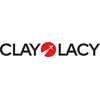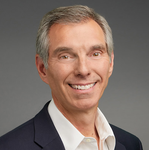NAFA member, H. Lee Rohde, III, President and CEO of Essex Aviation, discusses Private Jet Share options.
Private jet shares are a popular alternative for frequent fliers who want to enjoy the benefits of private aircraft ownership without the longer-term commitment or larger financial investment typical of purchasing a whole aircraft. In this blog, we’ll take a look at some popular private jet share options, as well as pros and cons for each.
What is a Private Jet Share?
As implied by its name, a private jet share refers to any private aviation program in which you own or lease a share of an aircraft rather than own it outright. There are multiple private jet share options to choose from, including fractional aircraft ownership, private jet membership or card programs and private jet chartering.
How Are Private Jet Shares Structured?
The private jet share structure depends entirely on which program, aircraft model and hours of utilization you require.
Fractional Ownership
Those interested in fractional ownership purchase a private jet share of a specific aircraft type and agree to an annual amount of allotted flight hours. Most fractional ownership programs require a minimum share size of 50 hours of flight time per year; the maximum share size is 800 hours of flight time per year, which is equivalent to ownership of the entire aircraft.
Fractional ownership shares are acquired from the company that operates the aircraft and has a designed shared ownership program and services agreement that all share owners participate in. This company is also responsible for employing pilots and flight attendants, administering maintenance, airport and hangar fees and insurance, which can be attractive to individuals who want to avoid managing the details of full aircraft ownership. Some fractional ownership programs also provide the option to upgrade or downgrade the aircraft size depending on your trip requirements.
Compared to other private jet share models, fractional ownership doesn’t require you to pay for the hours flown to position the aircraft to your departure point — also known as a deadhead cost. However, though you’ll save on certain costs and repositioning fees, the private jet share model comes with significant upfront acquisition and monthly operational costs. Fractional ownership can be the most expensive private jet share model because it closely replicates outright ownership and involves acquiring a portion of an aircraft. Additionally, although it’s possible to sell fractional shares back to the program provider, these shares tend to depreciate more due to their high level of annual utilization, resulting in lower residual values.
Membership and Jet Card Programs
Membership and jet card programs, though often lumped in the same category, are structurally unique. With a membership program, you agree to a fixed cost per hour at the start of the contract and are billed after each flight. You’re also often subjected to either monthly management or annual membership fees. There are two types of jet card programs: a dedicated service with a predetermined number of hours on a specific aircraft type or size category, and a debit card service that enables you to fund an established travel account and select the aircraft category on a trip-by-trip basis with agreed-to hourly rates. For the debit card program, the cost of the trip is calculated after the completion of your trip and deducted from your card program balance.
Unlike fractional ownership, which operates under FAA Part 91K regulations, membership and jet card programs are purchased through a variety of companies that may or may not have a direct ownership and operate under Part 135 regulations. When evaluating various programs, make sure you understand the relationship between the program provider and the aircraft you intend to utilize. Membership and jet card programs are often better suited for individuals interested in a short-term commitment and require a much lower investment than fractional ownership. Membership and jet card programs can be appealing because they come at a fixed rate, so there’s no need to negotiate the price for each flight.
One of the drawbacks to membership and jet card programs is that there’s often a longer advance notice requirement to schedule an aircraft. This is less of an issue if you’re the kind of traveler who books their trips well in advance but can be challenging if you often make last-minute travel arrangements, especially during peak periods such as holidays. Membership and jet card programs can also come with additional fees, such as repositioning fees, and the total cost of your trip might include taxi time as well as flight time.
Private Jet Chartering
Private jet chartering is an on-demand service that enables you to compare pricing and amenities for various aircraft types and book the one that best meets your travel needs in much the same way as you’d book a seat on a commercial flight. Those interested in chartering a private jet have the option of working with a charter operator or a charter broker, though it’s best practice to work with a private aviation consultant before considering either option. Like membership and jet card programs, this option can be well-suited for those looking for a short-term commitment.
Chartering is the most popular private aviation option due to the fact that it doesn’t require a significant capital cost upfront or fixed costs that contribute to maintenance and staff salaries — all you have to pay for is the utilization of the aircraft on a trip-by-trip basis. What you save on cost with chartering, however, you may need to trade for non-guaranteed availability and some due-diligence of the provider. It can sometimes be challenging to find an aircraft that meets both your specific needs and your schedule, so you might be forced to choose between one or the other.
Private Jet Share Models: A Breakdown
This article was originally published by Essex Aviation Group on their blog.




















